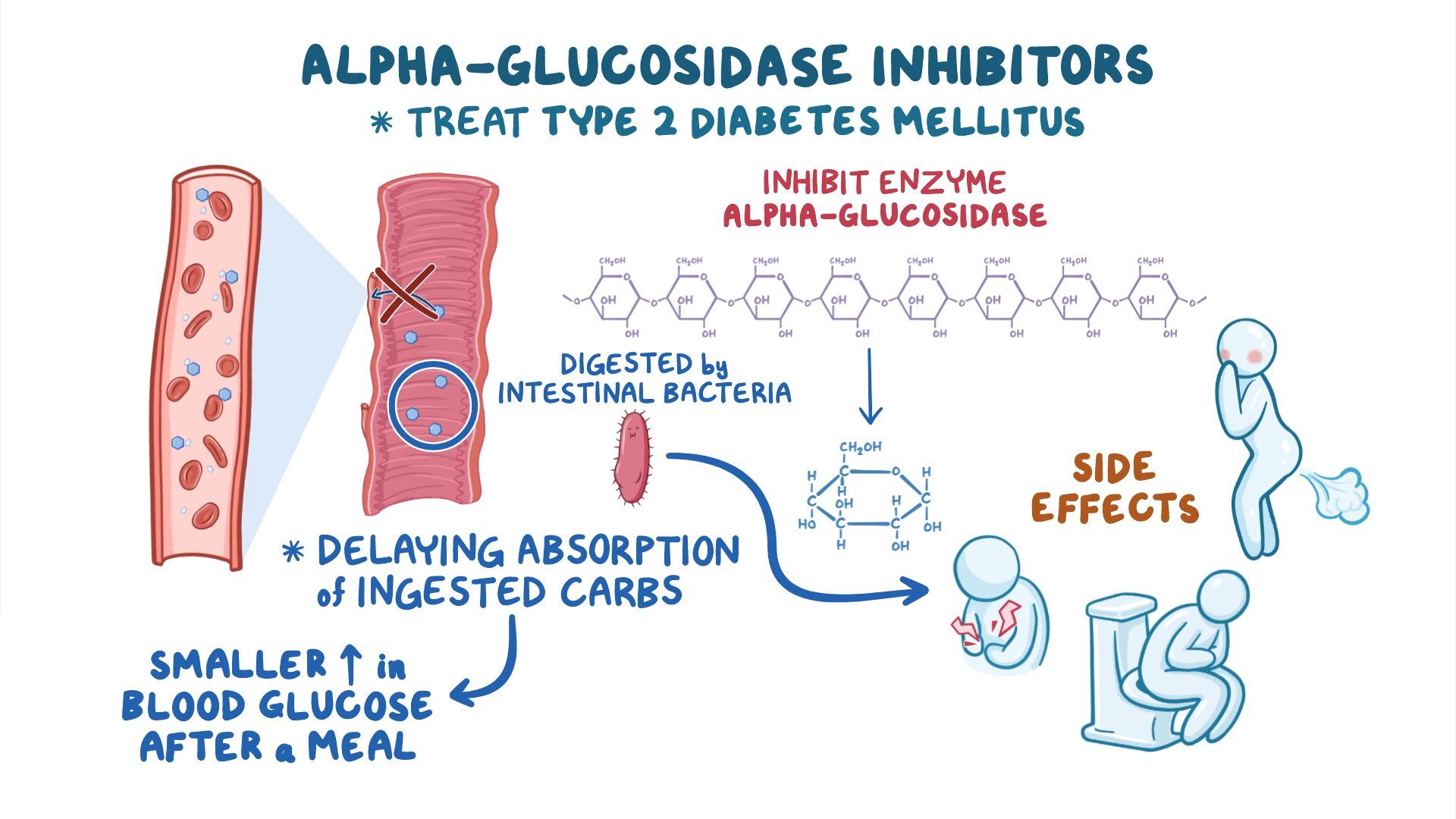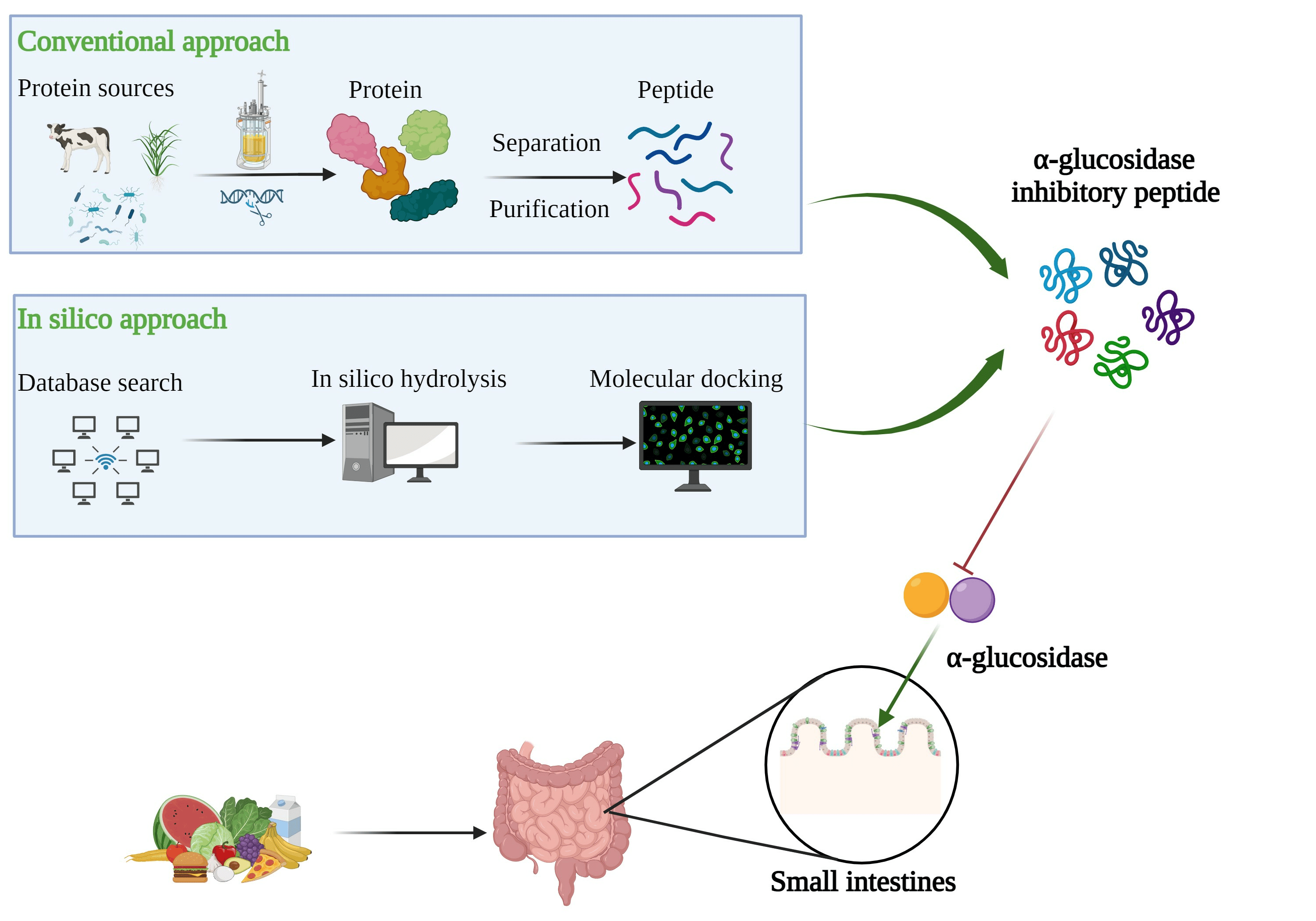Introduction

Alpha-glucosidase inhibitors (AGIs) are a class of oral medications primarily used to manage postprandial blood glucose levels in individuals with diabetes mellitus. They work by inhibiting the alpha-glucosidase enzyme in the small intestine, which is responsible for breaking down complex carbohydrates into glucose. By delaying carbohydrate digestion, AGIs help to reduce the rapid increase in blood glucose levels following a meal. Common examples of AGIs include Acarbose, Miglitol, and Voglibose.
Importance in Medical and Pharmaceutical Fields
AGIs have become an integral component of diabetes management, particularly for individuals with Type 2 diabetes. By targeting the digestive process, they offer a unique approach to controlling blood sugar levels, which is critical in preventing complications associated with diabetes, such as cardiovascular diseases, neuropathy, and retinopathy. The significance of AGIs extends beyond diabetes management, as ongoing research explores their potential benefits in treating other metabolic disorders. The impact of AGIs in the medical and pharmaceutical fields is substantial, highlighting their role in enhancing the quality of life for millions of people worldwide.
Objectives of the Article
This article aims to provide a thorough exploration of alpha-glucosidase inhibitors, detailing their mechanisms of action, types, clinical applications, therapeutic benefits, and associated risks. It will also examine recent research developments and potential future directions for AGIs. By the end of this article, readers will have a comprehensive understanding of the significance of AGIs in diabetes management and their potential broader applications in medicine.
Mechanism of Action

The alpha-glucosidase enzyme is located in the brush border of the small intestine and plays a crucial role in carbohydrate digestion. This enzyme breaks down complex carbohydrates, such as starch and disaccharides, into simple sugars like glucose, which can be readily absorbed into the bloodstream. Understanding the function of this enzyme is essential to appreciate how alpha-glucosidase inhibitors (AGIs) affect glucose metabolism.
How AGIs Inhibit This Enzyme
Alpha-glucosidase inhibitors work by competitively binding to the alpha-glucosidase enzyme, thereby blocking its ability to break down complex carbohydrates into glucose. By inhibiting this enzyme, AGIs slow down the digestion and absorption of carbohydrates in the small intestine. This delayed digestion results in a slower and more gradual rise in blood glucose levels after meals, which helps to manage postprandial hyperglycemia.
Impact on Carbohydrate Metabolism and Blood Glucose Levels
The inhibition of alpha-glucosidase by AGIs leads to several important effects on carbohydrate metabolism and blood glucose levels. Primarily, AGIs prevent the rapid spikes in blood glucose that typically occur after consuming a carbohydrate-rich meal. This moderation of postprandial blood glucose levels is crucial for individuals with Type 2 diabetes, as it helps to maintain overall glycemic control and reduce the risk of long-term complications.
Types of Alpha-Glucosidase Inhibitors
Classification of AGIs
Alpha-glucosidase inhibitors (AGIs) are classified based on their chemical structure and origin. The primary classification distinguishes AGIs into naturally occurring inhibitors and synthetic inhibitors. Naturally occurring AGIs are derived from various plants, bacteria, and fungi, while synthetic AGIs are developed through chemical synthesis in laboratories. Both types aim to inhibit the alpha-glucosidase enzyme, though their chemical structures and potency can vary.
Common Examples: Acarbose, Miglitol, and Voglibose
- Acarbose: Acarbose is a pseudotetrasaccharide derived from microbial sources. It is one of the most commonly prescribed AGIs for managing postprandial hyperglycemia in patients with Type 2 diabetes. Acarbose works by competitively inhibiting intestinal alpha-glucosidases, resulting in delayed carbohydrate digestion and absorption.
- Miglitol: Unlike Acarbose, Miglitol is a monosaccharide derivative that mimics the natural substrates of alpha-glucosidase. It is absorbed to a significant extent from the gastrointestinal tract but still effectively inhibits the enzyme in the small intestine. Miglitol is known for its high specificity and minimal side effects.
- Voglibose: Voglibose is a newer AGI that has shown effectiveness in controlling postprandial blood glucose levels. It is less absorbed in the gastrointestinal tract compared to Miglitol, making its action primarily localized to the intestine. Voglibose is popular in Asian countries for diabetes management.
Chemical Structure and Properties
- Acarbose: The chemical structure of Acarbose is characterized by a complex oligosaccharide arrangement, which allows it to bind effectively to the alpha-glucosidase enzyme. Its structure includes a cyclohexane ring with multiple hydroxyl groups, enhancing its binding affinity. The molecular formula for Acarbose is C25H43NO18.
- Miglitol: Miglitol has a simpler structure compared to Acarbose, being a monosaccharide derivative. It consists of a piperidine ring with hydroxyl groups at various positions, which helps mimic natural substrates of the enzyme. The molecular formula for Miglitol is C8H17NO5.
- Voglibose: Voglibose’s structure features a bicyclic ring system with multiple hydroxyl groups, similar to other AGIs, enhancing its inhibitory action on alpha-glucosidase. The molecular formula for Voglibose is C10H21NO7.
Clinical Applications

Use in Managing Diabetes Mellitus, Particularly Type 2 Diabetes
Alpha-glucosidase inhibitors (AGIs) are widely used in the treatment of Type 2 diabetes mellitus. These medications are particularly effective in controlling postprandial hyperglycemia, which is a critical aspect of diabetes management. By inhibiting the alpha-glucosidase enzyme, AGIs slow down the digestion of carbohydrates, resulting in a more gradual release of glucose into the bloodstream.
Benefits in Controlling Postprandial Blood Glucose Levels
The primary benefit of alpha-glucosidase inhibitors in diabetes management is their ability to control postprandial blood glucose levels. By delaying carbohydrate digestion, AGIs help to reduce the post-meal glucose surge, which is a significant contributor to overall glycemic variability.
Comparison with Other Diabetes Medications
When compared to other anti-diabetic drugs, alpha-glucosidase inhibitors offer a unique mechanism of action that complements other treatment strategies. Unlike insulin or sulfonylureas, which increase insulin levels in the body, AGIs work locally in the gut to slow carbohydrate absorption. This localized action results in fewer systemic side effects and a lower risk of hypoglycemia, making AGIs a safer option for many patients.
Therapeutic Benefits and Risks
Advantages of AGIs in Diabetes Management
- Postprandial Blood Glucose Control: AGIs are particularly effective in controlling postprandial blood glucose levels, reducing the risk of hyperglycemia after meals.
- Low Risk of Hypoglycemia: Unlike insulin or sulfonylureas, AGIs do not cause hypoglycemia when used alone. This safety profile makes them an attractive option for patients who are at risk of low blood sugar episodes.
- Weight Neutrality: AGIs do not contribute to weight gain, which is a common side effect of many other diabetes medications. This characteristic is beneficial for patients who are managing their weight as part of their diabetes treatment plan.
- Complementary to Other Medications: AGIs can be used in combination with other anti-diabetic drugs to enhance overall blood glucose control.
Potential Side Effects and Adverse Reactions
While AGIs are generally well-tolerated, they can cause some gastrointestinal side effects due to their mechanism of action in the gut. These potential side effects include:
- Gastrointestinal Discomfort: Common side effects include flatulence, bloating, abdominal pain, and diarrhea.
- Possible Liver Enzyme Elevation: In rare cases, AGIs may cause an elevation in liver enzymes.
- Allergic Reactions: Although uncommon, some patients may experience allergic reactions, including skin rashes and itching.
Strategies to Mitigate Side Effects
To minimize the side effects associated with AGIs, several strategies can be employed:
- Gradual Dose Titration: Starting with a low dose and gradually increasing it can help the gastrointestinal system adjust to the medication, reducing the severity of side effects.
- Dietary Modifications: Patients are advised to follow dietary recommendations that include consuming smaller, more frequent meals and avoiding large quantities of complex carbohydrates.
- Monitoring and Education: Regular monitoring of liver function and educating patients about the potential side effects and how to manage them can enhance adherence to the medication.
- Combination Therapy: Using AGIs in combination with other anti-diabetic drugs can reduce the dosage required for each medication, potentially lowering the risk of side effects.
Current Research and Developments

Recent Studies on AGIs
Recent studies have highlighted the efficacy and safety of alpha-glucosidase inhibitors (AGIs) in managing Type 2 diabetes mellitus. These studies have provided further insights into the long-term benefits and potential of AGIs in improving glycemic control and reducing diabetes-related complications. For instance, a study by Wang et al. demonstrated that AGIs significantly lower HbA1c levels and reduce the risk of cardiovascular events in patients with Type 2 diabetes.
Innovations in AGI Formulations and Delivery Methods
Innovations in the formulation and delivery methods of AGIs are enhancing their therapeutic potential and patient adherence. Recent advancements include:
- Extended-Release Formulations: Development of extended-release (ER) formulations aims to improve the pharmacokinetic profile of AGIs, allowing for more consistent blood glucose control with fewer doses.
- Nanotechnology-Based Delivery Systems: Research into nanotechnology-based delivery systems is opening new avenues for enhancing the bioavailability and efficacy of AGIs.
- Combination Therapies: Combining AGIs with other antidiabetic medications in a single formulation can simplify the treatment regimen, enhance glycemic control, and improve patient adherence.
Potential New Therapeutic Uses Beyond Diabetes
Beyond their established role in diabetes management, AGIs are being investigated for potential therapeutic uses in other metabolic and gastrointestinal disorders:
- Obesity Management: AGIs may play a role in obesity management by modulating carbohydrate absorption and impacting energy balance.
- Metabolic Syndrome: AGIs have shown promise in managing components of metabolic syndrome, including dyslipidemia and hypertension.
- Pre-Diabetes and Insulin Resistance: Studies are exploring the use of AGIs in individuals with pre-diabetes or insulin resistance to prevent the progression to full-blown Type 2 diabetes.
- Gastrointestinal Disorders: There is emerging interest in the potential use of AGIs in treating certain gastrointestinal disorders, such as irritable bowel syndrome (IBS), by modulating gut microbiota and improving digestive health.
Future Directions

Emerging Trends in AGI Research
The field of alpha-glucosidase inhibitors (AGIs) is witnessing several emerging trends that promise to enhance their effectiveness and broaden their applications:
- Biotechnological Advancements: Advances in biotechnology are enabling the development of novel AGIs with improved specificity and potency.
- Multi-Targeted Therapies: There is growing interest in developing AGIs that not only inhibit alpha-glucosidase but also target other enzymes involved in carbohydrate metabolism.
- Gut Microbiota Modulation: Understanding the interaction between AGIs and gut microbiota is becoming a focal point of research.
Prospects for Combining AGIs with Other Treatments
Combining AGIs with other therapeutic agents offers promising prospects for improving diabetes management and addressing other metabolic disorders:
- Fixed-Dose Combinations: The development of fixed-dose combinations (FDCs) of AGIs with other antidiabetic drugs, such as metformin, SGLT2 inhibitors, or DPP-4 inhibitors, can simplify treatment regimens and improve patient adherence.
- Adjunctive Therapies: AGIs can be used as adjunctive therapies with insulin or GLP-1 receptor agonists to provide additional postprandial glucose control without significantly increasing the risk of hypoglycemia.
- Non-Diabetic Indications: Beyond diabetes, AGIs are being explored in combination with other medications for treating conditions such as obesity, polycystic ovary syndrome (PCOS), and non-alcoholic fatty liver disease (NAFLD).
Role of Personalized Medicine in AGI Therapy
The advent of personalized medicine is set to revolutionize the use of AGIs in clinical practice:
- Genetic Profiling: Genetic profiling can help identify individuals who are more likely to benefit from AGI therapy based on their genetic makeup.
- Tailored Dosage and Regimens: Personalized medicine allows for tailoring the dosage and administration regimens of AGIs to individual patient needs.
- Monitoring and Feedback Systems: Advanced monitoring systems and digital health tools can provide real-time feedback on blood glucose levels, enabling dynamic adjustments to AGI therapy.
